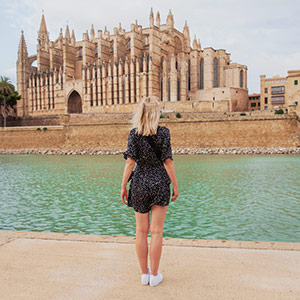
Doñana National Park

Changing scenery with thousands of birds
Doñana is one of Europe's most beautiful and important wetlands. In addition, it has a peculiarity that makes this national park very special: in just one day you can see very different ecosystems: marshland, lagoons, pine groves, aloe veras, moving dunes, cliffs, 30 kilometres of unspoilt white beaches... A natural spectacle that is different each season, between the Andalusian provinces of Huelva and Seville.
Doñana National Park
The park is in the region of Andalusia in southern Spain, straddling the provinces of Huelva and Seville.
Seville (Andalusia)
Huelva (Andalusia)
Huelva (Andalusia):
- Almonte
- Hinojos
- Aznalcázar
- Puebla del Río, La
Seville (Andalusia):
Avenida Bajo de Guía, s/n
11540 Sanlúcar de Barrameda, Cadiz (Andalusia)
A 6 km por pista asfaltada desde el centro de visitantes La Rocina (A-483 El Rocío-Matalascañas, km 27,5)
21750 Almonte, Huelva (Andalusia)
Carretera A-483 (km 38,7), desvío a unos 3 km de Matalascañas
21760 Almonte, Huelva (Andalusia)
Cerrado Garrido (Marismas de Aznalcázar)
41849 Aznalcázar, Seville (Andalusia)
Carretera A-483 (El Rocío-Matalascañas), km 27,5, a 1 kilómetro de El Rocío
21750 Almonte, Huelva (Andalusia)
Activa JS
In images
What you need to know
-
What you will find
Exploring the protected paths around Doñana gives you the chance to see some of the most endangered species on the planet, like the Spanish imperial eagle and the Iberian lynx. Doñana is home to more than 400 species of birds and you might be lucky enough to see breathtaking scenes such as the “pink carpet” that the flamingo colonies create when they feed. In fact, the marshlands are a staging, breeding and wintering site for thousands of European and African birds.As for the variety of landscapes, you will find surprising phenomena such as the mobile dunes (some of which are more than 30 metres high) that move from the beach and bury the pine forests they find in their path.
-
Routes around the Park
If you feel like exploring the park on your own, you will receive information at its visitor centres, and you’ll find walking trails, bike lanes, and observatories. However, to fully access and explore all of its ecosystems in depth, you need to book a visit with guided tours on 4x4 vehicles, bike tours, horseback riding along the beach at sunset, photography and birdwatching courses, and much more. A unique way to explore Doñana is by boarding the tourist boat “Real Fernando”, which navigates the final stretch of the Guadalquivir River.Map of Doñana National Park
-
Don't leave without...
Within Doñana you'll come across the famous white village of El Rocío, a meeting point for hundreds of lay brotherhoods during the Procession of el Rocío, one of the most famous and popular in Spain (held between May and June). Another iconic event takes place on 26 June, in a tradition dating back more than 500 years, when the Almonte organise the Saca de las Yeguas, rounding up the wild horses you can see grazing in the National Park.While you're here, make sure to explore tourist destinations like Huelva, La Rábida and its Muelle de las Carabelas, Sanlúcar de Barrameda or Moguer and try local specialities like white prawns from Huelva or Iberian ham. There are other natural spaces nearby you simply cannot miss, like the Sierra de Aracena Natural Reserve and the Picos de Aroche, or the Riotinto Mining Park.
Travel plans for inspiring you















